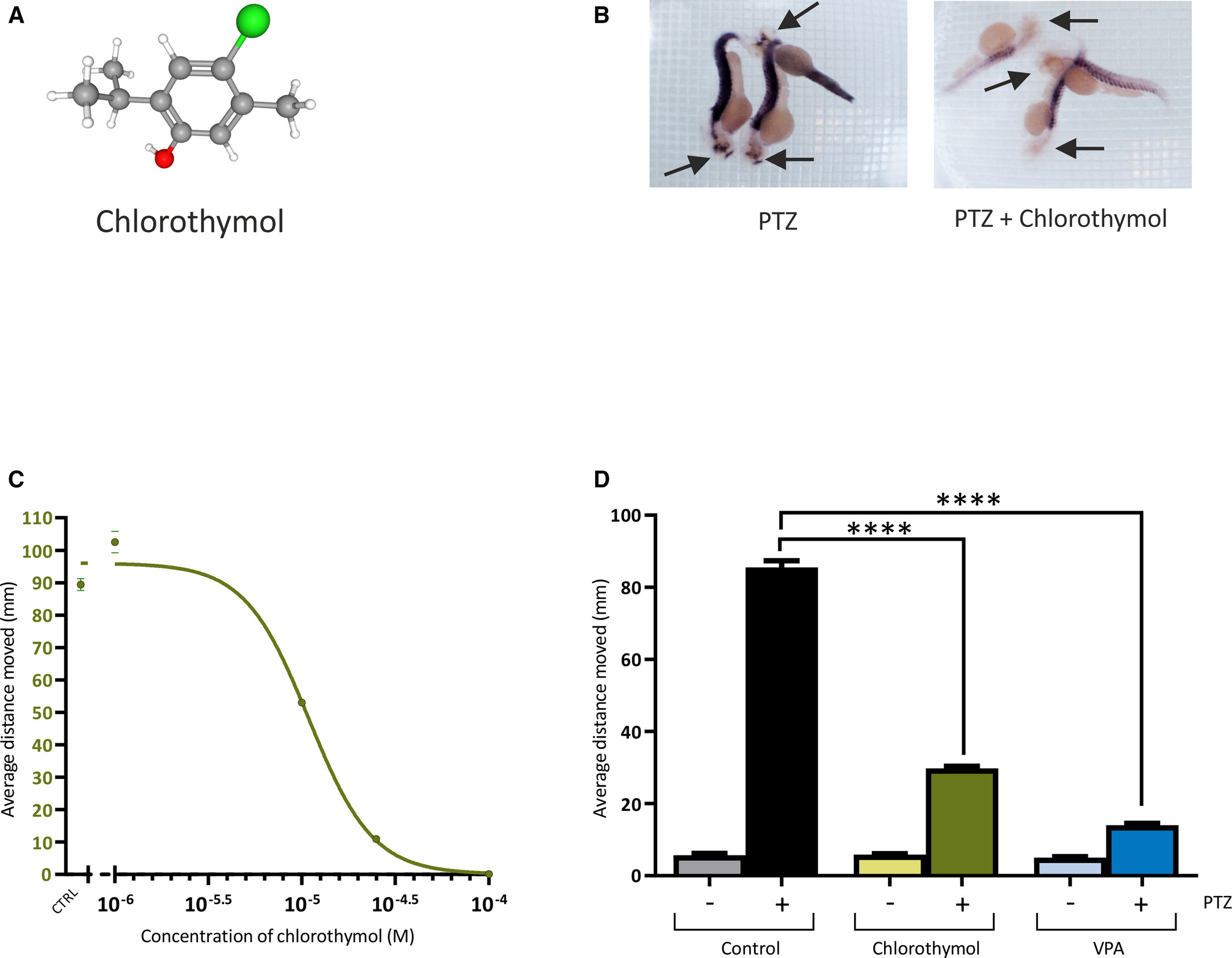Fig. 1 Effects of chlorothymol on pentylenetetrazol (PTZ)‐treated zebrafish. A, Chlorothymol structure (carbon = gray, hydrogen = white, oxygen = red, chlorine = green). B, In situ hybridization to detect c‐fos mRNA in 2 days postfertilization (dpf) Danio rerio larvae pretreated with dimethylsulfoxide (DMSO) vehicle only (left panel) or 25 µmol·L–1 chlorothymol in DMSO (right panel) before exposure to 20 mmol·L–1 PTZ. Arrows indicate the head of each embryo, where strong PTZ‐induced c‐fos expression is suppressed by exposure to chlorothymol. C, Chlorothymol reduces PTZ‐induced locomotor behavior in a concentration‐dependent manner. The average distance moved by 3‐dpf D rerio larvae following introduction of 20 mmol·L–1 PTZ was recorded over a 1‐hour observation period in fish pretreated with a range of chlorothymol concentrations. Data displayed show mean values ± SEM (n = 18 fish per concentration, N = 3 independent experiments). D, Chlorothymol is more potent than the prototype antiseizure drug, valproate (VPA), as it reduced the seizurelike behavior at a 100‐fold lower concentration. The average distance moved by 3‐dpf D rerio larvae following introduction of 20 mmol·L–1 PTZ was recorded over a 1‐hour observation period in fish pretreated with vehicle only (control), 25 µmol·L–1 chlorothymol, or 2.5 mmol·L–1 VPA. Data displayed show mean values ± SEM (n = 24 fish per treatment, N = 3 independent experiments). Data were analyzed using one‐way analysis of variance with Tukey multiple comparisons test (****P ≤ .0001 compared to PTZ‐treated animals)
Image
Figure Caption
Figure Data
Acknowledgments
This image is the copyrighted work of the attributed author or publisher, and
ZFIN has permission only to display this image to its users.
Additional permissions should be obtained from the applicable author or publisher of the image.
Full text @ Epilepsia

